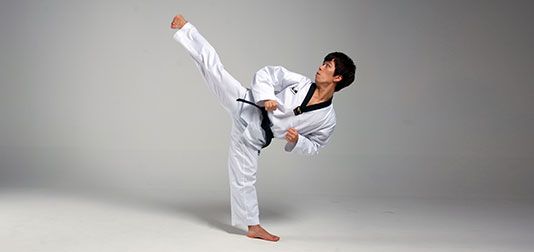andyjeffries
Senior Master
One of my goals for this year is that I'm looking to improve my side kick. I've never been happy with my side kick, it's always felt unstable and not powerful enough.
So at the age of 40, with far too many pounds keeping my belt down I've decided this year I'm going to fix it.
I've had a friend in Korea send me a video of how he does side kicks and while I was in Korea in 2014 one of the instructors in a dojang was teaching some of her students side kick improvements, so I got some tips from there, but now I'm opening up for global tips...
Up until last year we had always brought the knee forwards first (towards the target) before rotating to the side and then finally rotating the hips over (so the shin becomes parallel to the floor). We've since stopped that and now we go fluidly straight through from sparring stance (or whatever stance) through to the shin being parallel to the floor.
Three things I've noticed that I'm still doing differently to the Korean style is:
1) My knee/upper leg is parallel to the floor, in Korea even when kicking low they lift their knee really high in the chamber position.
2) My arms have tended to go wherever they are needed for balance, in Korea they tend to have the top arm (same side as the kicking leg) with the forearm parallel to the floor and resting on the torso.
3) We all seem to counter rotate our shoulders (so when kicking right legged, the right shoulder drops towards the floor during the kick - not all the way, but in that direction).
Does anyone else (particularly Kukkiwon stylists) have any tips for important things they feel are part of a correct side kick or drills they do/have their students do?
So at the age of 40, with far too many pounds keeping my belt down I've decided this year I'm going to fix it.
I've had a friend in Korea send me a video of how he does side kicks and while I was in Korea in 2014 one of the instructors in a dojang was teaching some of her students side kick improvements, so I got some tips from there, but now I'm opening up for global tips...
Up until last year we had always brought the knee forwards first (towards the target) before rotating to the side and then finally rotating the hips over (so the shin becomes parallel to the floor). We've since stopped that and now we go fluidly straight through from sparring stance (or whatever stance) through to the shin being parallel to the floor.
Three things I've noticed that I'm still doing differently to the Korean style is:
1) My knee/upper leg is parallel to the floor, in Korea even when kicking low they lift their knee really high in the chamber position.
2) My arms have tended to go wherever they are needed for balance, in Korea they tend to have the top arm (same side as the kicking leg) with the forearm parallel to the floor and resting on the torso.
3) We all seem to counter rotate our shoulders (so when kicking right legged, the right shoulder drops towards the floor during the kick - not all the way, but in that direction).
Does anyone else (particularly Kukkiwon stylists) have any tips for important things they feel are part of a correct side kick or drills they do/have their students do?

